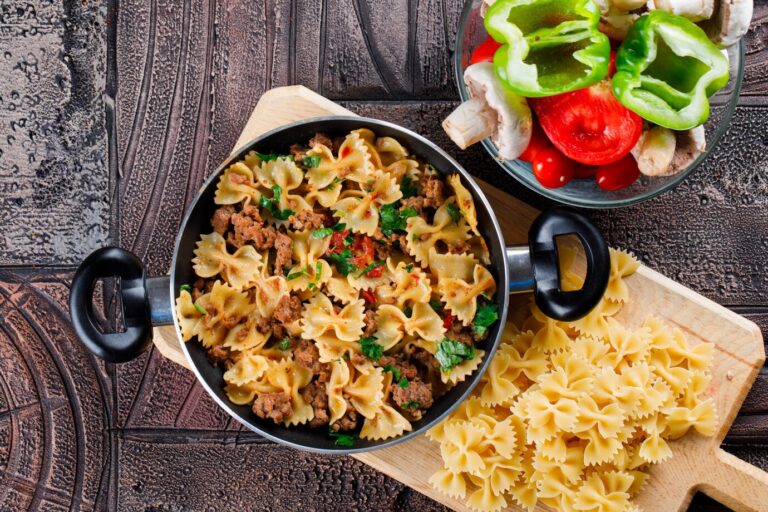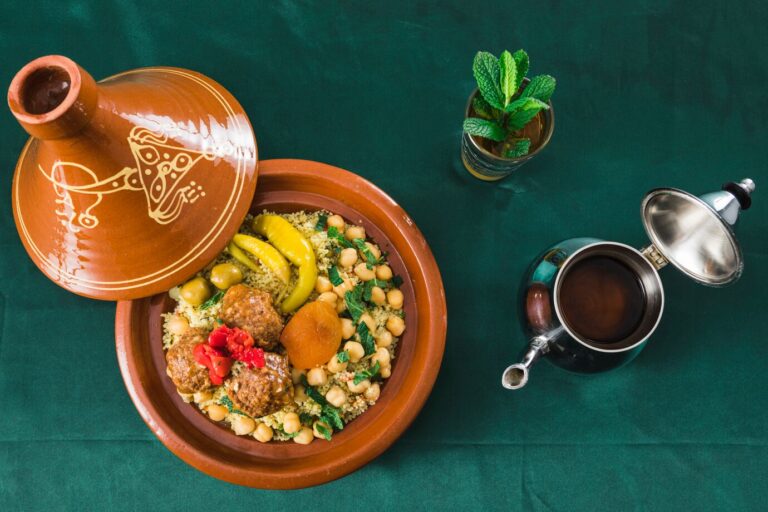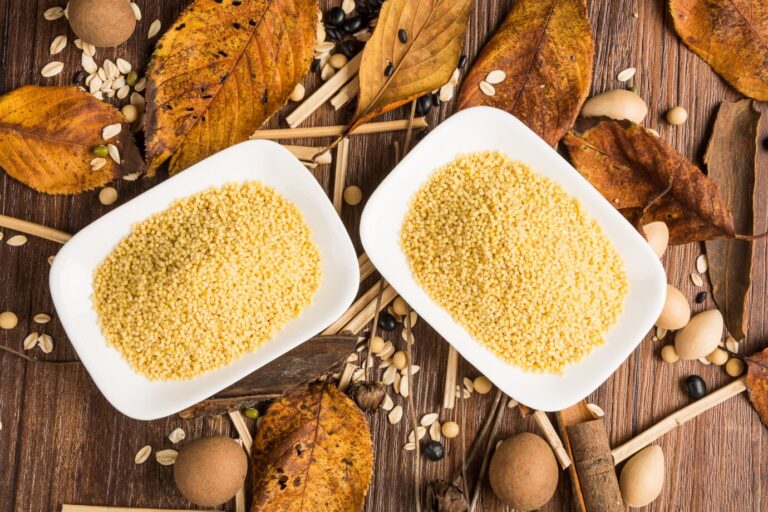Tagine Spices: 7 Secrets for Bold, Flavorful Dishes
Ever Wondered What Makes Tagine Spices So Special?
Have you ever wondered how to create bold, flavorful dishes that make your taste buds dance with joy? If so, it’s time to discover the magic of tagine spices! These spices are the heart of Moroccan cooking and bring a rich depth of flavor to everything from savory stews to roasted vegetables. But what exactly are tagine spices, and how can they transform your everyday cooking? Well, you’re in the right place! In this post, we’ll uncover the seven secrets to using tagine spices to create dishes that are bursting with flavor. Ready to dive into the world of Moroccan spices? Let’s get started!
The Secret Behind Tagine Spices
Tagine spices are a blend of aromatic herbs and spices used in traditional Moroccan tagine dishes. These spices work together to create an exotic and delicious flavor profile, often adding heat, sweetness, and depth to the dish. What makes this blend so special is its versatility—tagine spices can be used to enhance a wide variety of dishes, from chicken and lamb to vegetarian stews and couscous.
How Long Does It Take?
Making a dish with tagine spices doesn’t have to take hours. While cooking times for tagine dishes vary, the process itself is straightforward. Preparing the spice blend will take just 10 minutes, and the actual cooking time can range from 30 minutes to an hour, depending on the dish.
Difficulty Level: Easy to Intermediate
The difficulty level of using tagine spices is pretty beginner-friendly. If you’re new to Moroccan cooking, you might find the process of mixing and cooking with these spices a bit unfamiliar, but don’t worry! We’ll walk you through every step, and before long, you’ll be cooking with these spices like a pro.
Essential Ingredients: The Key to Bold Flavor
When it comes to tagine spices, you’ll find a few key ingredients that form the foundation of the spice mix. These ingredients are what make tagine dishes so unique. Here’s a list of the essential tagine spices you’ll need, along with why they’re important:
1. Cumin
- Why It’s Important: Cumin is earthy and slightly smoky, giving depth to tagine dishes. It’s one of the main spices that provides the “Moroccan” flavor you love.
- Substitution: If you don’t have cumin, coriander seeds can work as a substitute, although the flavor will be slightly different.
2. Coriander
- Why It’s Important: Coriander brings a mild, citrusy flavor that balances out the earthiness of cumin. It’s a key spice in making the dish fragrant.
- Substitution: Ground fennel seeds can be used if you need a coriander replacement.
3. Cinnamon
- Why It’s Important: Cinnamon adds warmth and a hint of sweetness to tagine dishes, balancing out spicy and savory elements.
- Substitution: If you’re out of cinnamon, allspice can provide a similar flavor, though it may not be quite as sweet.
4. Paprika
- Why It’s Important: Paprika adds a touch of heat and smokiness to the spice blend, giving your dishes an extra layer of flavor.
- Substitution: Chili powder can work in a pinch, but paprika’s unique smoky flavor is hard to replicate.
5. Ginger
- Why It’s Important: Fresh ginger or ground ginger adds a zesty kick and balances out the other spices, giving the dish a nice warmth.
- Substitution: If you don’t have ginger, you can use a pinch of ground turmeric, though the flavor will be different.
6. Turmeric
- Why It’s Important: Turmeric adds a beautiful golden color to your tagine dish and a mild bitterness that helps balance sweeter flavors.
- Substitution: You can substitute turmeric with a small amount of saffron, although saffron has a stronger, distinct flavor.
7. Saffron (Optional)
- Why It’s Important: Saffron is often considered the gold standard for Moroccan cuisine. It adds a subtle floral and earthy aroma, elevating the dish.
- Substitution: If you don’t have saffron, a pinch of safflower can give a similar color, but it won’t replicate the taste.
Step-by-Step Instructions: Preparing the Perfect Tagine Spices Blend
1: Gather Your Spices
Before you start, make sure you have all your spices ready. Fresh ground spices work best for a more vibrant flavor.
2: Measure the Spices
Here’s a simple spice ratio for a traditional tagine spice blend:
- 2 teaspoons cumin
- 2 teaspoons coriander
- 1 teaspoon cinnamon
- 1 teaspoon paprika
- 1 teaspoon ginger
- ½ teaspoon turmeric
- ½ teaspoon saffron (optional)
3: Mix the Spices
In a small bowl, mix all the spices together until evenly combined. This is your homemade tagine spice blend!
4: Store the Blend
If you don’t plan on using the spices right away, store the blend in an airtight container. It will stay fresh for up to six months in a cool, dry place.
Assembly: Bringing Your Tagine Dish to Life
Once you’ve prepared the tagine spice blend, it’s time to cook! Here’s how to build a flavorful dish from your tagine spices:
1: Prepare Your Main Ingredients
- Choose your protein (chicken, lamb, beef, or vegetables) and cut it into bite-sized pieces.
- If you’re using vegetables, chop them into uniform pieces so they cook evenly.
2: Sauté Aromatics
- In a large pot or tagine, heat some olive oil over medium heat. Add chopped onions, garlic, and fresh herbs like parsley or cilantro.
- Sauté until softened and fragrant.
3: Add the Protein or Vegetables
- Add your protein (or vegetables) and cook until browned on all sides.
4: Sprinkle in the Tagine Spices
- Sprinkle your homemade tagine spices over the cooked ingredients and mix well, making sure everything is evenly coated.
5: Add Liquid and Simmer
- Add broth or water to the pot, just enough to cover the ingredients. Bring to a boil, then reduce to a simmer. Let it cook for 30-45 minutes, or until the flavors meld together and the meat is tender.
6: Serve and Garnish
- Serve your tagine dish with couscous, rice, or flatbread. Garnish with fresh cilantro or almonds for an extra burst of flavor.
Storage and Preparation Tips: Keep It Fresh
- Storing the Spice Blend: If you make extra tagine spice blend, store it in an airtight container away from heat and light. It should stay fresh for about six months.
- Storing Leftover Tagine Dishes: If you have leftovers, let the dish cool completely before storing it in an airtight container. It will keep in the fridge for 3-4 days. To reheat, gently warm it on the stove or in the microwave.
Recipe Variations: Get Creative with Your Tagine Dishes
While traditional tagine dishes often feature chicken or lamb, there are many ways to get creative with tagine spices. Here are a few fun ideas:
- Vegetarian Tagine: Use a variety of root vegetables like sweet potatoes, carrots, and parsnips. Add chickpeas for protein.
- Seafood Tagine: Use fish like cod or tilapia, along with tomatoes and olives, for a Mediterranean twist.
- Fruit Tagine: Add dried fruits like apricots, raisins, or prunes to the dish to bring a touch of sweetness to balance the spices.
Conclusion: Time to Experiment with Tagine Spices!
Now that you know the secrets behind tagine spices, it’s time to get cooking! Whether you’re trying out a traditional tagine or getting creative with your own spin on the recipe, these spices will help you make bold, flavorful dishes that will impress everyone at your table. Don’t be afraid to experiment—mix and match different spices to find your perfect combination. Happy cooking!
Frequently Asked Questions
1. Can I use pre-made tagine spice mixes?
Yes, you can! Pre-made blends are convenient, but making your own gives you more control over the flavor.
2. Are tagine spices healthy?
Yes, tagine spices are packed with antioxidants, anti-inflammatory properties, and other health benefits, making them a great addition to your meals.
3. How do I store tagine leftovers?
Store leftover tagine in an airtight container in the fridge for up to 4 days. You can also freeze it for up to 3 months for later use.
4. Can I use tagine spices in other dishes?
Absolutely! Tagine spices are great for marinating meats, seasoning vegetables, or adding to rice dishes for a flavorful kick.







